Best phones for music 2020: top choices for audio on your smartphone
All phones are capable of playing music, but the best phones for music in 2020 are a little more special than the others. With the headphone jack all but absent on most premium phones these days, the best options for mobile audiophiles aren’t alway found on the most popular models.
This is exemplified by our number one pick, the LG V60. It’s a hard phone to find in Europe, but in the US is widely available. It has a headphone jack with a Quad-DAC that improves the audio output from any app, a huge bonus on a smartphone that hardly any others have.
Also on the list are phones with great Bluetooth audio quality, and every phone can play music to wired headphones via a Lightning or USB-C dongle - just be aware that those aren’t always included in the retail box.
You should also bear in mind the speakers on a mobile device if you’re a keen podcast listener or want to relax on the sofa with some Netflix without headphones. There’s a phone for music for all tastes.
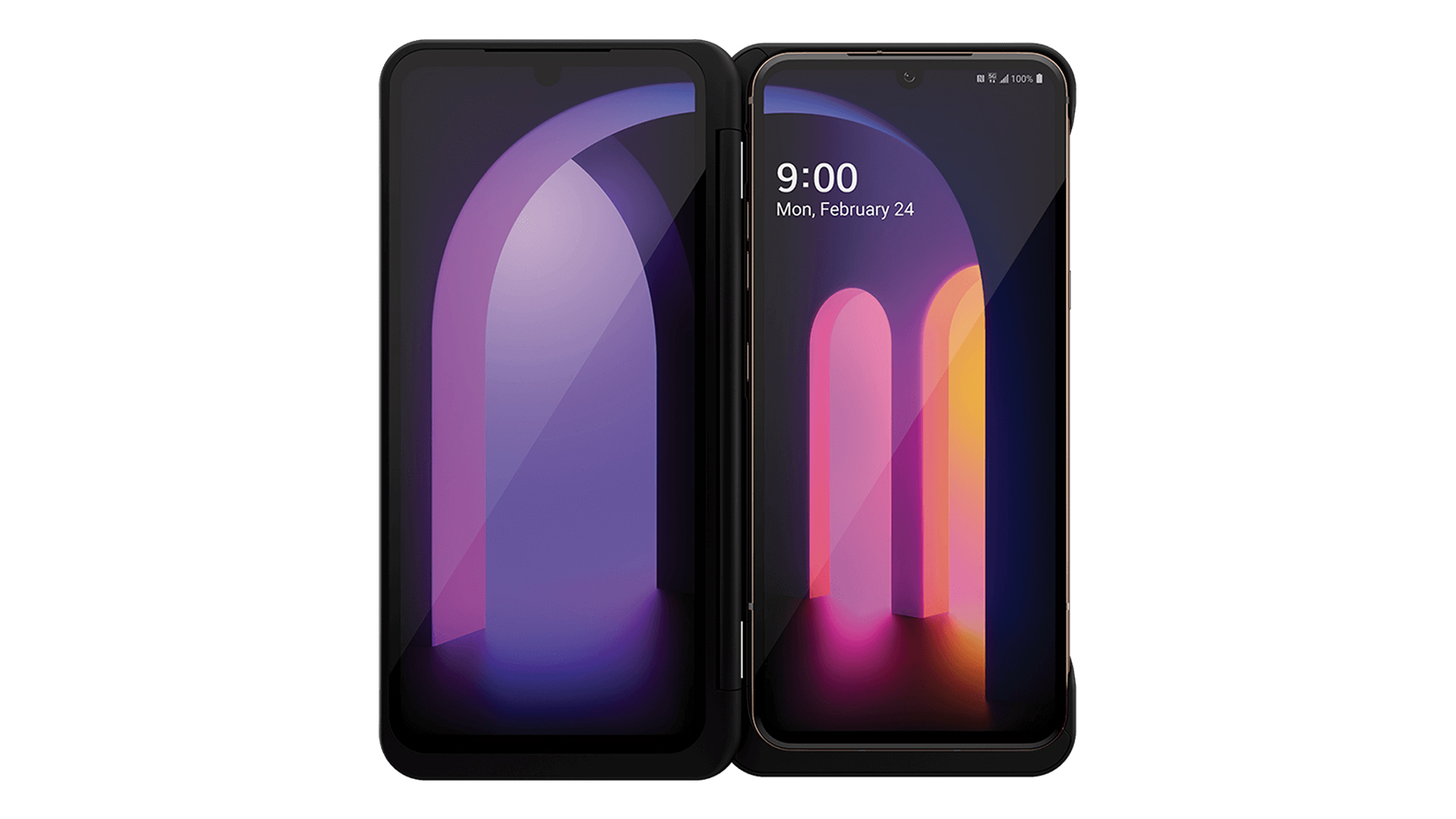
1. LG V60 ThinQ
The best headphone jack on a phone
Release date: March 2020 | Weight: 218g | Dimensions: 169.3 x 77.6 x 8.9 mm | OS: Android 10 | Screen size: 6.8-inch | Resolution: 1080 x 2460 | CPU: Snapdragon 865 | RAM: 8GB | Storage: 128GB | Battery: 5,000mAh | Rear camera: Dual 16MP + 13MP | Front camera: 10MP
While it may not be as popular with consumers or tech press as its Korean rival Samsung, LG is the leading smartphone manufacturer when it comes to wired audio. The LG V60 still has a headphone jack unlike many competing high-end flagships which already makes it better, but the company also includes a Quad-DAC (digital-to-analog) component that drives the audio to an even better level of detail.
What’s the point? Does this somehow make the sound four times better, or louder? Not quite. The DAC turns the digital signal into the analog one your headphone drivers can be fed. Bluetooth headphones have a DAC, even some USB-C to 3.5mm cables do.
The LG V60 has a ‘quad’ DAC because it lets the phone analyze the digital signal four times in parallel. These four interpretations are then combined and cross-checked, to eliminate errors. This in turn increases the signal-to-noise ratio, giving us purer sound.
It also has an unusually powerful headphone amp that, when used in the Quad DAC mode, offers higher volume output than most. This is useful for naturally quieter headphones.
We tested the V60 with high quality in-ear and over-ear headphones and the audio quality is much improved over other wired smartphone outputs, as well as wireless. The external dual stereo speakers aren’t the best on the market, but with wired audio this good, it doesn’t matter to us.
LG also does a whole bunch else with its tech, incorporating the most wonderfully geeky sound customization of any phone. You can alter the ‘digital filter’, which changes the shape of the impulse response. This is like EQ that affects the character of the sound stage rather than the tonal make-up.
There’s normal parametric EQ too, and a DTS:X 3D Surround mode. But we don’t recommend the latter for music.
Read our full LG V60 ThinQ review
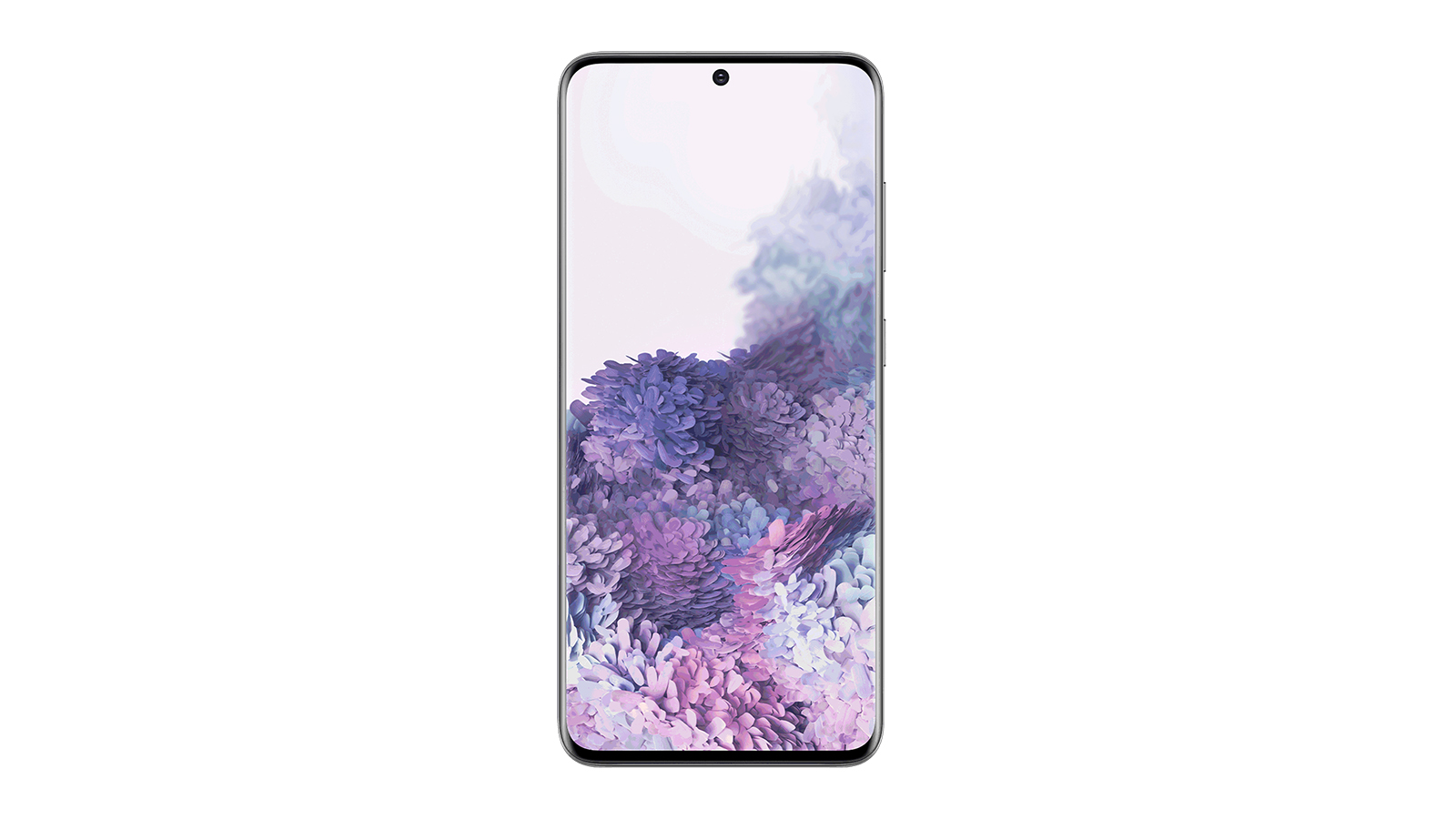
2. Samsung Galaxy S20
Superb USB-C and wireless audio
Release date: March 2020 | Weight: 163g | Dimensions: 151.7 x 69.1 x 7.9mm | OS: Android 10 | Screen size: 6.2-inch | Resolution: 1440 x 3200 | CPU: Snapdragon 865 / Exynos 990 | RAM: 8GB/12GB | Storage: 128GB | Battery: 4,000mAh | Rear camera: 12MP + 64MP + 12MP | Front camera: 10MP
Samsung slips to second place in 2020 thanks to the loss of the headphone jack. That doesn’t mean it loses many of its audio chops, but it does mean that LG bests Samsung for pure sound quality through wired headphones.
Samsung puts a pair of in-ear AKG-tuned USB-C earbuds in the box with the Galaxy S20 and S20 Plus and they’re very good for a bundled set but a little thin on some details. Samsung doesn’t ship the phone with a 3.5mm headphone jack dongle, so you’ll have to fork out $14.99 for one if you don’t want to go wireless.
The S20’s all around sound reproduction is above average though thanks to some beefed up internals, and it can even support ultra-high-end formats like DSD 64/128 and 32-bit PCM. But, no, you won’t find that on Spotify.
The phone also has Dolby Atmos audio. In the cinema this usually means there are speakers across the ceiling for advanced spatial audio. At home it might mean having extra ‘height channel’ speakers. In a phone it involves psychoacoustic processing used to increase the sense of size and scale in audio.
We find it works better for movies than music when using headphones, though, as it can also add a little too much weight to the mid-bass, and this may clog up the separation in a high-performing headphone. When we review headphones, we turn off all these sound-coloring extras. But trust your ears on this one and use whatever makes your tunes more fun and engaging.
The Samsung Galaxy S20’s speakers are good too, with plummy-sounding lower mids that give podcasts, lower register vocals and bass instruments a bit more weight. They also benefit from Dolby Atmos enhancement, and you can tweak the sound with a few different Dolby modes.
Read our full Samsung Galaxy S20 review
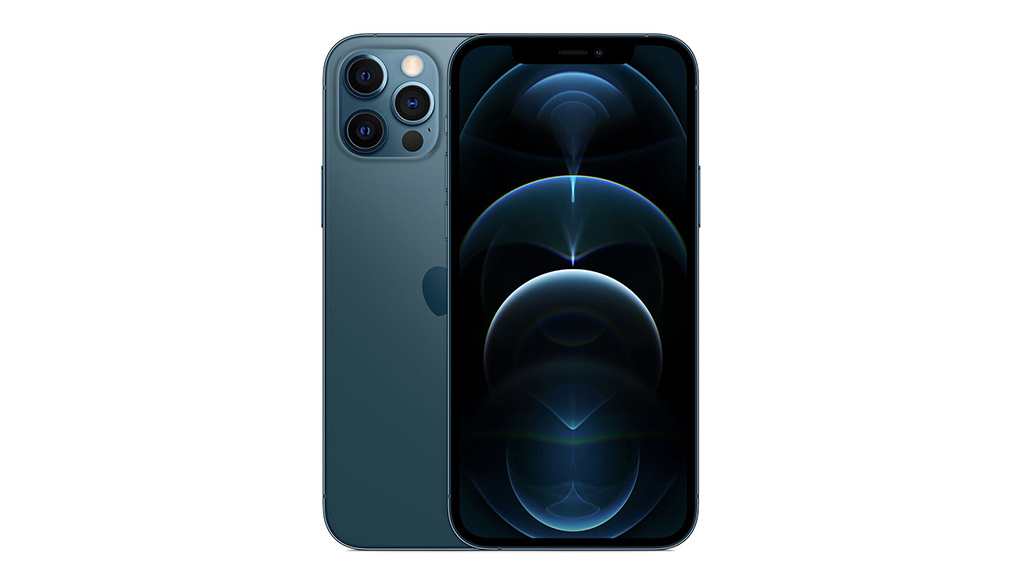
3. iPhone 12 Pro
A strong all-rounder with great speakers
Release date: October 2020 | Weight: 189g | Dimensions: 146.7 x 71.5 x 7.4mm | OS: iOS 14 | Screen size: 6.1-inch | Resolution: 1170 x 2532 | CPU: Apple A14 Bionic | RAM: 6GB | Storage: 128GB/256GB/512GB | Battery: 2,815mAh | Rear camera: 12MP + 12MP + 12MP + LiDAR scanner | Front camera: 12MP
Consistently a great choice for audio, the iPhone 12 Pro builds upon what worked so well for the iPhone 11 Pro. That means it has excellent internal speakers with stereo drivers for a more immersive experience. Enhanced with Dolby Atmos, the sound seems much wider and more expansive for humble internal speakers.
Other useful features include the pairing experience between the iPhone 12 Pro and headphones with an Apple H1 or W1 chipset, which includes Apple-owned Beats Solo Pro and the AirPods Pro.
The downside? The iPhone 12 Pro doesn't come bundled with any EarPods although we wouldn't recommend using them exclusively for music unless you have no other option anyhow. Also, there's no headphone jack again. Instead, your options lie with the Lightning port or Bluetooth with the latter proving far superior.
Read our full iPhone 12 Pro review
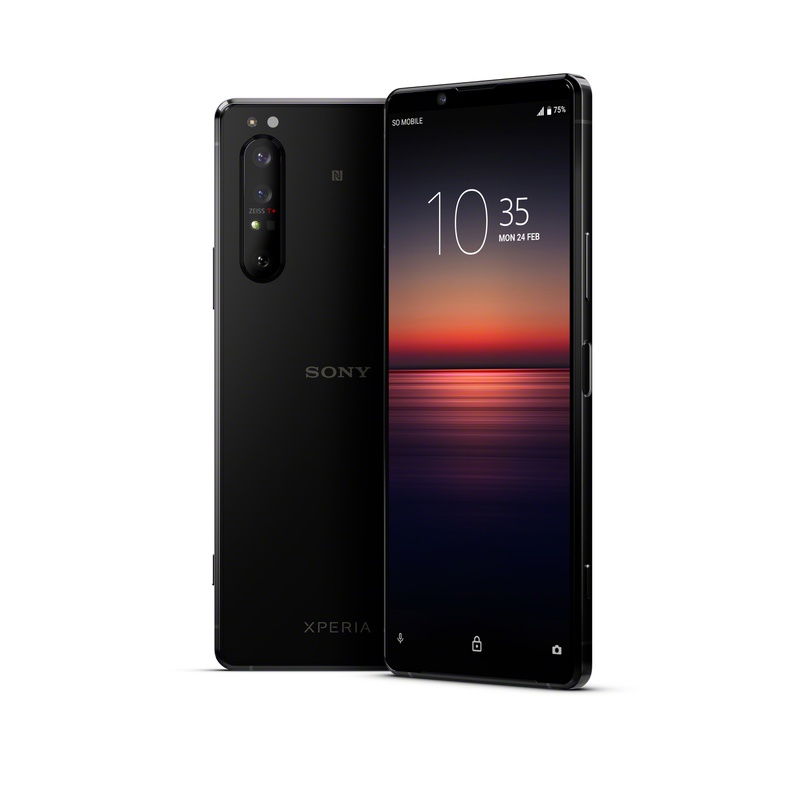
4. Sony Xperia 1 II
A little large but otherwise great
Release date: May 2020 | Weight: 181g | Dimensions: 165.1 x 71.1 x 7.6 mm | OS: Android 10 | Screen size: 6.5-inch | Resolution: 1644 x 3840 | CPU: Snapdragon 865 | RAM: 8GB | Storage: 256GB | Battery: 4,000mAh | Rear camera: 12MP + 12MP + 12MP + 0.3MP | Front camera: 8MP
Reintroducing the 3.5mm jack is a smart move for the Sony Xperia 1 II ensuring it's immediately appealing to those keen on playing music unimpeded. The best Sony handset we've seen for a while, the Sony Xperia 1 II is expensive and a little bulky to hold but offers a gorgeous design and excellent battery life.
Besides being great for viewing media on thanks to that high-end screen, the Sony Xperia 1 II is also good for listening to music through its speakers if needed but you'll likely return to the advantages of the 3.5mm headphone jack.
Just bear in mind that smaller hands may find this phone a little awkward to handle.
Read our full Sony Xperia 1 II review.
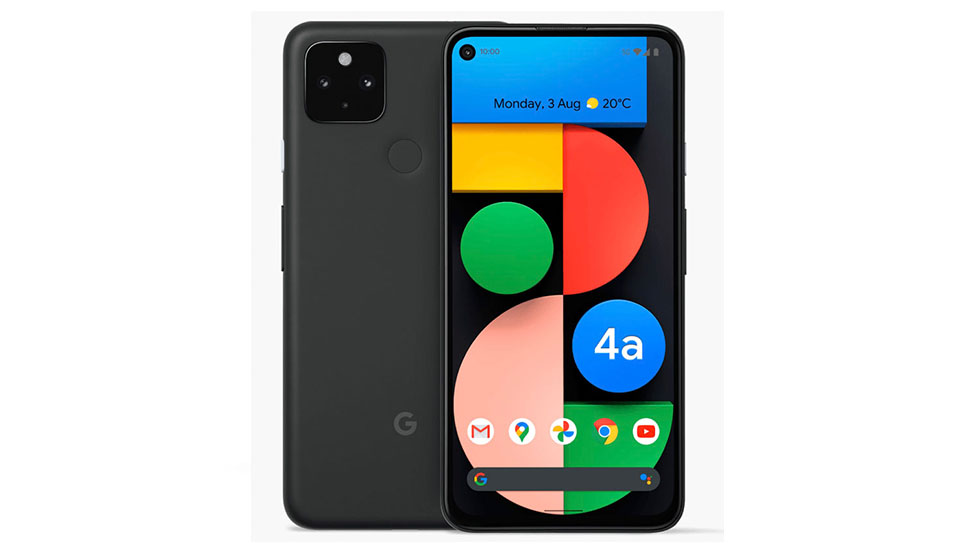
5. Google Pixel 4a
Solidly dependable in every way
Release date: August 2020 | Weight: 143g | Dimensions: 144 x 69.4 x 8.2 mm | OS: Android 10 | Screen size: 5.81-inch | Resolution: 1080 x 2340 | CPU: Snapdragon 730G | RAM: 6GB | Storage: 128GB | Battery: 3,140mAh | Rear camera: 12.2MP | Front camera: 8MP
Retaining the headphone jack of the Google Pixel 3a before it, the Google Pixel 4a is already onto a winner when it comes to playing music. Granted, you'll need to add your own set of headphones as the phone doesn't come with any but we expect you already have some in mind.
Being able to charge your handset at the same time as using wired headphones is a big advantage but it's the Pixel 4a's stereo speakers that propel it further up the list for best phones for music. While they're not particularly loud in a noisy room, they're good enough for the price with decent bass and mid-bass warmth compared to their predecessor.
Simply put, the Google Pixel 4a continues the Google trend of being a solid all-rounder with clean software, a decent design, good screens, and that much missed headphone jack.
Read our full Google Pixel 4a review.
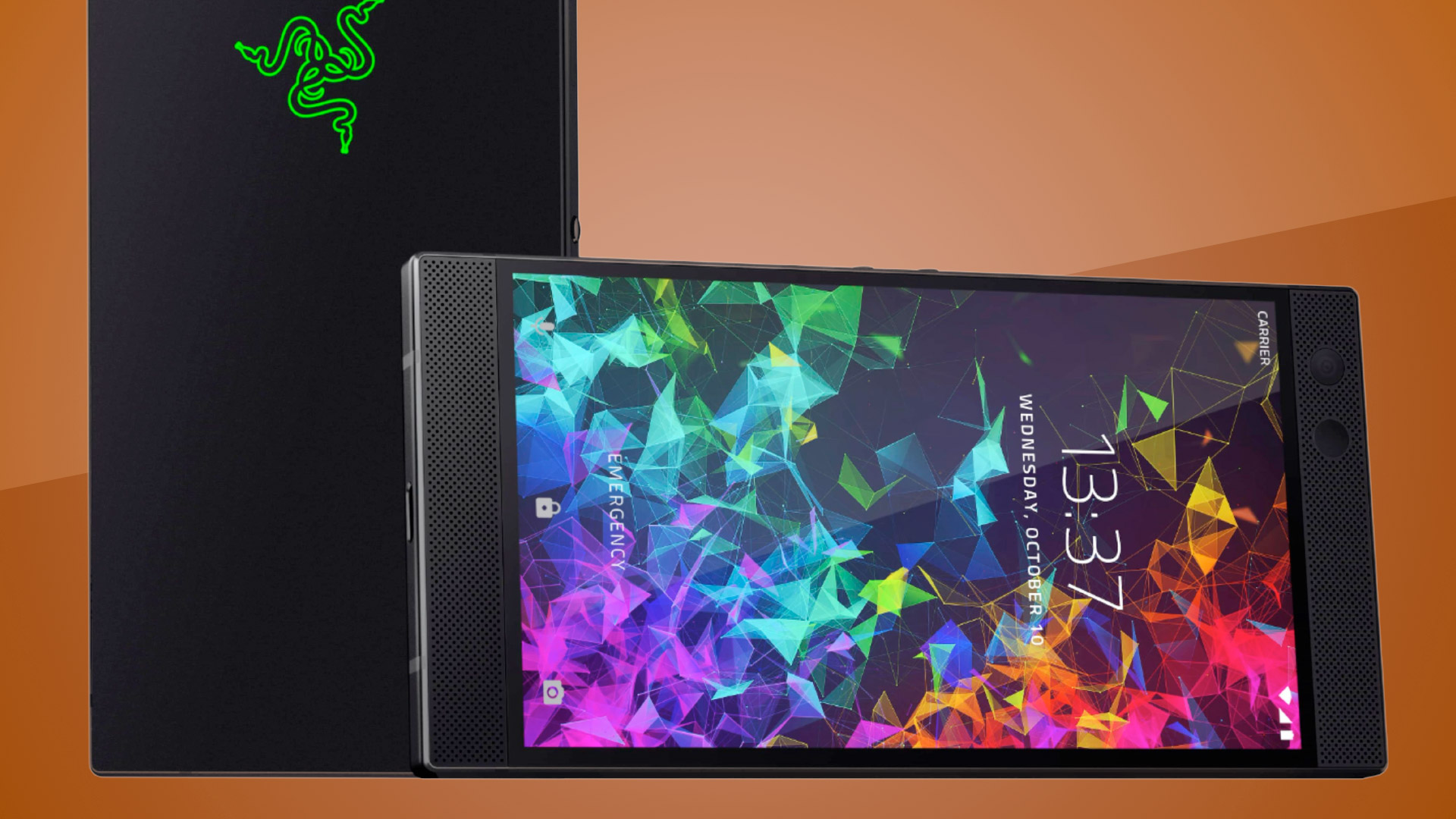
6. Razer Phone 2
A phone with serious volume
Release date: October 2018 | Weight: 220g | Dimensions: 158.5 x 79 x 8.5mm | OS: Android 9 | Screen size: 5.72-inch | Resolution: 1440 x 2560 | CPU: Snapdragon 845 | RAM: 8GB | Storage: 64GB | Battery: 4,000mAh | Rear camera: 12MP + 12MP | Front camera: 8MP
The Razer Phone 2 is one of the masters of flat-out loud phone speakers, alongside its arch-rival the Asus ROG Phone 2.
There’s space above and below the screen to allow for more room for these speakers. And both of them sit on the front, rather than using the common strategy of having one on the bottom, one up front.
Driver size isn’t actually the crucial bit here, but rather an extra chunk of cabinet space in the plastic speaker enclosure. Sometimes all you need is a little fresh air to let the sound breathe.
At maximum volume, the Razer Phone 2 doesn’t exactly sound super-relaxed and unstrained. But when it’s competing with the noise of your showering or frying onions, volume matters more.
These speakers really project.
There’s no headphone jack on the Razer Phone 2, which loses it major points. However, you do get a 3.5mm adapter in the box, which incorporates a 24-bit DAC.
Read our full Razer Phone 2 review
- Just want the best overall phone? Check out the best smartphones


No comments